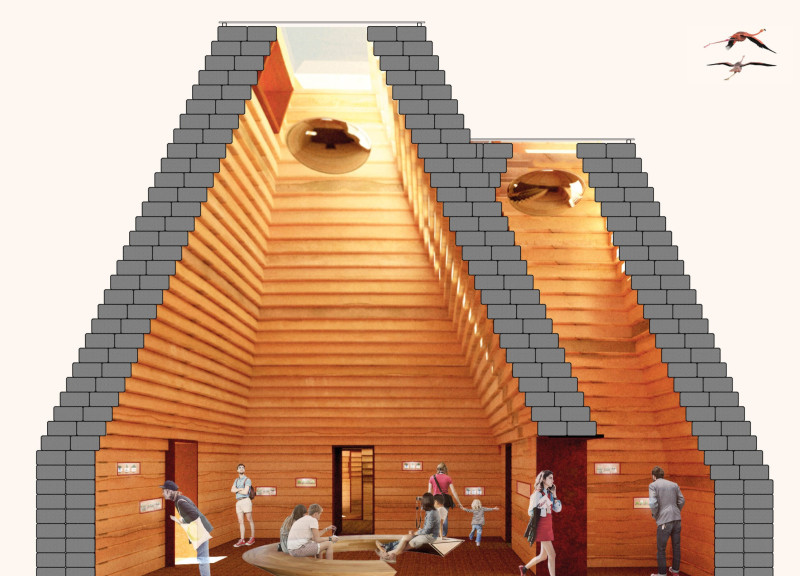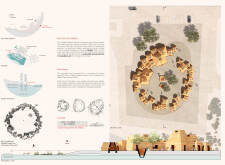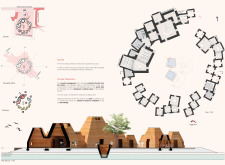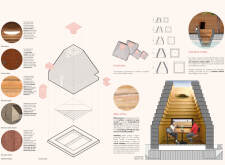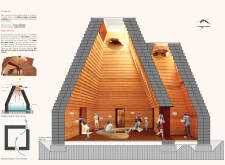5 key facts about this project
The design employs a circular layout, reflecting the formation of salt crystals found in the nearby Sabkha. This arrangement serves multiple functions, creating a sheltered environment for visitors and promoting engagement with the landscape. The building modules are composed of various materials that are local and sustainable, reinforcing the project's commitment to environmental stewardship.
Sustainable Design Approaches
One distinctive aspect of this project is its adherence to sustainable design principles. The use of rammed earth as a primary building material emphasizes thermal mass and energy efficiency, while its local sourcing connects the structures directly to the site. Wooden planks, sourced sustainably, add warmth to the facility's aesthetic and further engage with the local environment. Corten steel elements are incorporated to illustrate resilience, changing appearance over time and symbolizing the dynamic nature of the ecosystem.
Natural ventilation strategies, including solar chimneys and cross-ventilation, are utilized to minimize reliance on mechanical systems, ensuring comfort in extreme climatic conditions without compromising energy efficiency. Furthermore, water management strategies highlight the project’s commitment to sustainability, utilizing the site's water table for irrigation and promoting education about the delicate balance of the wetland’s ecosystem.
Educational Integration
The facilities prioritize educational engagement through thoughtfully designed interactive displays and informational signage. Central spaces within the design integrate educational materials that discuss local ecosystems, water conservation, and the importance of biodiversity within wetland areas. This emphasis on education not only enhances visitor experience but also fosters a deeper understanding of environmental conservation.
The project embodies a holistic approach, fusing architecture with ecological sensitivity. By prioritizing sustainable practices and educational engagement, the Al Wathba Wetland Reserve facilities provide a valuable resource for the community and contribute positively to the conservation efforts of the wetland ecosystem.
For further insights into the architectural designs, explore the project's presentation, including architectural plans and sections that detail the thoughtful integration of sustainable materials and design elements.


